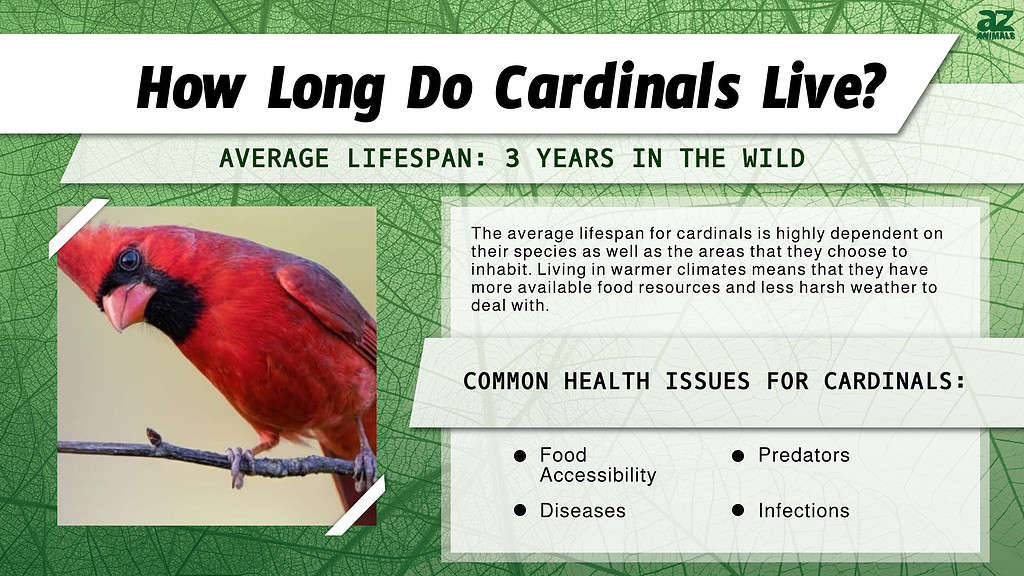
With their gorgeous red plumage, it’s easy to see why cardinals are a favorite sight for many nature lovers- but how long do cardinals live and what is the average cardinal lifespan like? The Northern Cardinal was mostly a Southern U.S. bird back in the 1880s. However, these days, their habitat has now increased to the north and Midwest, particularly along the Missouri and Mississippi Rivers. Throughout the years, they have become one of the most popular birds that visit backyard feeders.
Cardinals can be pretty shy, however, so catching a glimpse of one standing still can be rare. Want to learn more about this beautiful wild bird? If you’ve ever wanted to learn about how long cardinals live and other fun facts, then read on!
How Long Do Cardinals Live?
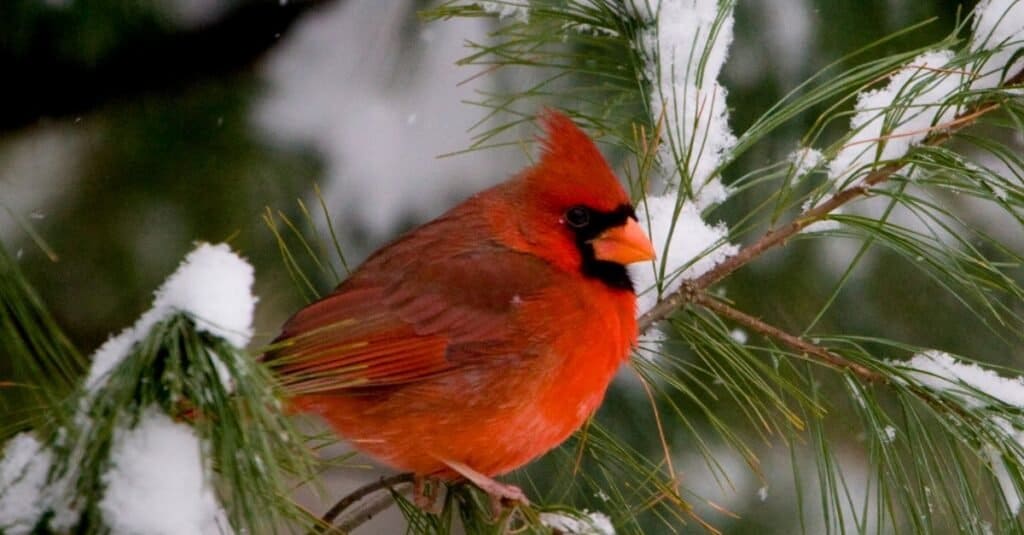
©iStock.com/BeyondMyLens
Cardinals live for 3 years in the wild on average. However, there have been cases of them living anywhere between 13-15 years in captivity. The oldest Northern Cardinal found was a female that was 15 years and 9 months old when she was discovered in Pennsylvania.
Let’s take a look at the lifespans of other cardinal species to compare:
- The Vermilion cardinal is a kind of cardinal found in Colombia and Venezuela. These cardinals have a lifespan of two to three years.
- A desert cardinal can be found in the deserts of the United States and Mexico. This species has a lifespan of eight years.
- Red crested cardinals live for three to six years in the wild. They may live in captivity for 13-15 years. They may be found in Argentina, Bolivia, southern Brazil, Paraguay, and Uruguay, among other places.
The average lifespan for cardinals is highly dependent on their species as well as the areas that they choose to inhabit. Living in warmer climates means that they have more available food resources and less harsh weather to deal with.
Now that we know how long cardinals live, let’s explore the stages of their life cycle!
The Average Cardinal Life Cycle
The cardinal’s life cycle is quite similar to many other bird species. Let’s explore the small differences in detail.
Courtship
Male cardinals will have fiercely claimed their territory by early spring and will court and mate with a chosen female. The breeding seasons are timed to coincide with the number of insects available. The female will then begin to build her nest with small twigs, bark, and leaves. It takes between 3 and 9 days to create a nest.
Laying Eggs
The female lays 3 to 4 eggs, which she subsequently incubates for 12 to 13 days. The male and female alternate incubating the nest, while the male frequently feeds the female. Once the incubation period is over, the eggs will begin to hatch!
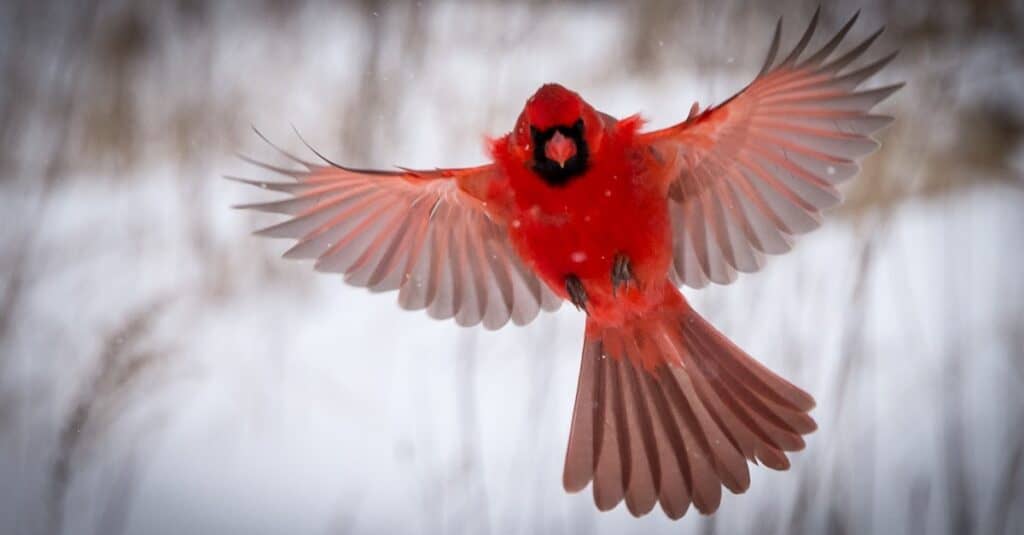
Red crested cardinals live for 3-6 years in the wild.
©iStock.com/Lynnae_Lowe
Hatchlings
The hatchlings are blind and featherless and must be carefully nurtured for several more days, primarily by the mother. Following the hatching of the eggs, the father goes into a frenzy of food collecting and feeding the chicks! This is because the nestlings must be fed every 3-4 times each hour in the beginning stages of their life. The birds stay in the nest for about 9-14 days.
Adulthood
The young cardinals are approximately the size of the adults after 8 days. They usually fly for the first time by day ten. The mother departs the family a few days after the nestlings fledge, and the male takes overfeeding and raising the young. Cardinals form flocks in the fall and remain together all winter, but they disperse once the mating season begins in February.
What Makes a Cardinal’s Lifespan Special?
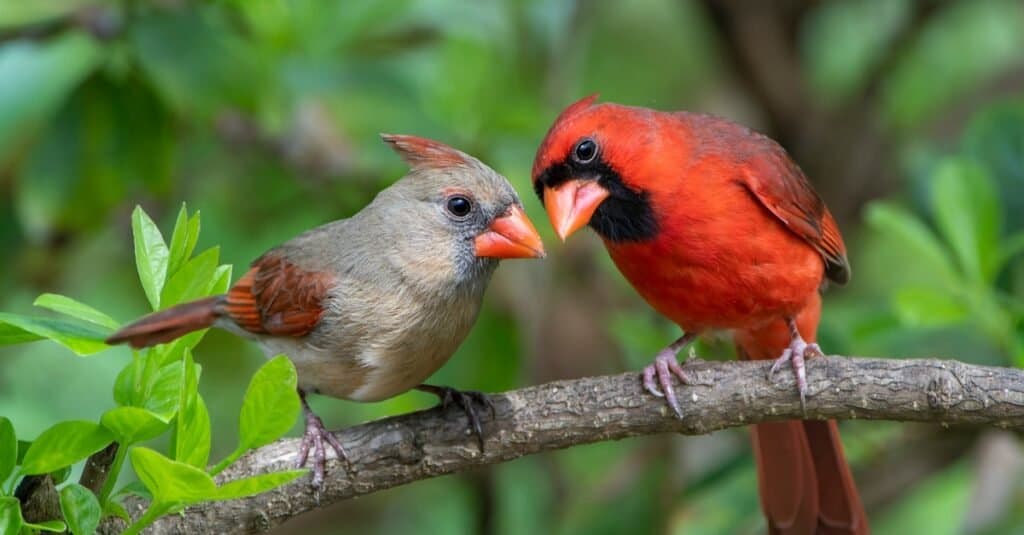
A lack of food poses many problems for a cardinal and its lifespan.
©Bonnie Taylor Barry/Shutterstock.com
Northern Cardinals (Cardinalis cardinalis) are also known as Common Cardinals, Redbirds, and Virginia Nightingales. Because these birds are so well-known and easily identified, they wind up being referred to as cardinals rather than their full name. They are members of the Cardinalidae family. The red hue of northern cardinals’ plumage is caused by carotenoids in their feather structure, which they get through their food. It is only the male cardinals that sport this bright red shade as females are a soft, warm tan with a vivid orange beak.
Northern cardinals, both male and female, are skilled songbirds. They are also true romantics as these birds are monogamous and at times even mate for life. Generally, the couple stays together if they are able to raise healthy offspring, but they may split if they need to find a better partner for raising chicks. Let’s now learn about the average cardinal’s lifespan and how long they can survive in the wild.
The Most Common Factors That Impact The Cardinal’s Lifespan
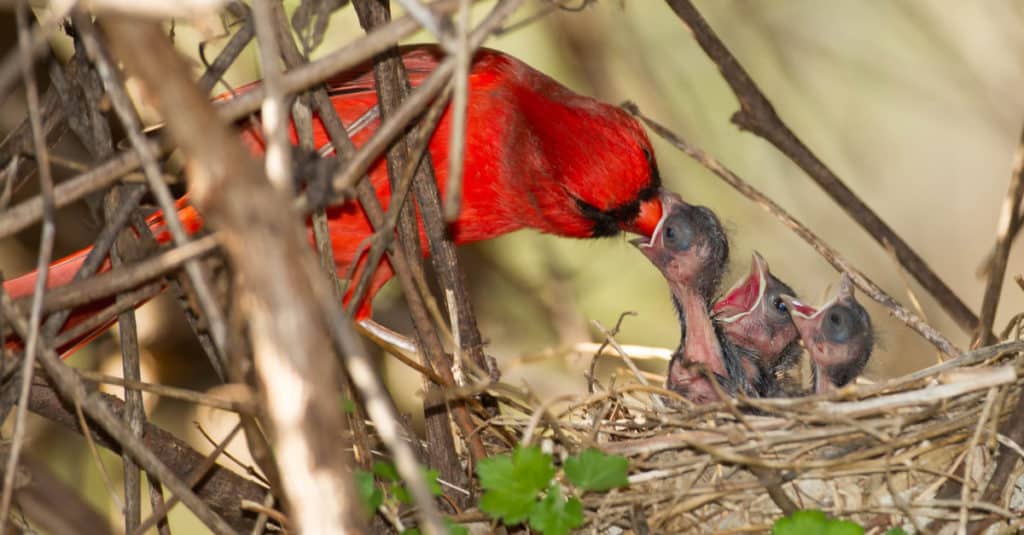
Cardinal couples stay together for the duration of their lifespans if they are able to raise healthy offspring.
©Agnieszka Bacal/Shutterstock.com
Every year, more than 40% of adult cardinals die. The bulk of these deaths takes place throughout the winter and breeding seasons. A variety of factors affect the longevity of cardinals.
Some of these include:
- Predators: Predation is a significant factor that has a strong influence on the lifespan of all birds. Cardinals are prey to a number of large predators. Cardinal eggs are eaten by snakes, hawks, owls, and squirrels. Adult cardinals are preyed upon by cats, foxes, and other birds of prey.
- Sickness: Cardinals, like all other birds, are susceptible to viral, bacterial, and fungal diseases. The most prevalent illness in cardinals is the mosquito-borne avipoxvirus. Cardinals can die as a result of pox lesions. Other infections that can kill cardinals include avian cholera, aspergillosis, salmonellosis, and deadly conjunctivitis.
- Food Accessibility: Cardinals will eat sunflower seeds as a regular part of their diet. They also eat different cereals, fruits, safflower seeds, pine tree seeds, chickweed seeds, and weeds. Their food supplies are restricted throughout the winter. A lack of food produces a range of health problems for these birds.
The photo featured at the top of this post is © iStock.com/ANCHASA MITCHELL
Thank you for reading! Have some feedback for us? Contact the AZ Animals editorial team.






